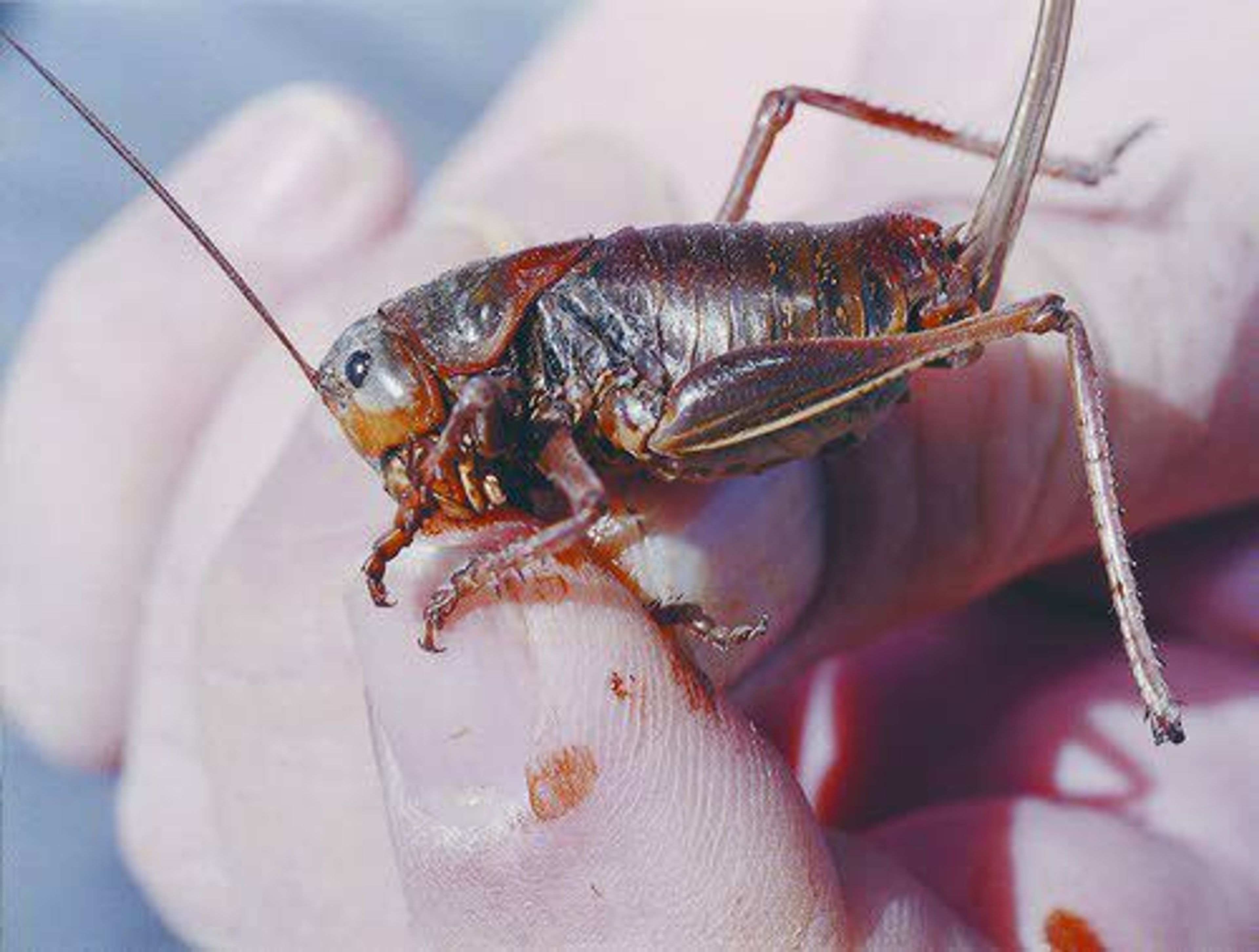Jumping Jimminy, crickets are coming
Scourge of the Mormon settlers are swarming the American West
BOISE - Farmers in the U.S. West face a creepy scourge every eight years or so: Swarms of ravenous insects that can decimate crops and cause slippery, bug-slick car crashes as they march across highways and roads.
Experts say this year could be a banner one for Mormon crickets - 3-inch-long bugs named after the Mormon pioneers who moved West and learned firsthand the insect's devastating effect on forage and grain fields.
The U.S. Department of Agriculture's Animal Plant Health Inspection Service reports "significantly higher Mormon cricket populations" on federal land in southwestern Idaho, agency spokeswoman Abbey Powell wrote in an email to The Associated Press.
"There isn't a clear explanation why populations are so much higher this year," Powell wrote. "We know that populations are cyclical. ... In Idaho, in a few locations, we have seen populations as high as 70 per square yard."
The bugs can start to be detrimental to rangeland and crops when they number about 8 per square yard, state officials said.
The federal agency says the bugs - actually katydids, an entomological cousin to grasshoppers - are stretched in a band across southwestern Idaho, concentrated around Winnemucca, Nev.; and sprinkled throughout Oregon, Washington, Montana, Wyoming, Arizona and Colorado.
Residents in the north-central Oregon town of Arlington started dealing with Mormon crickets in June, scrambling to protect gardens and farm crops and trying to keep the bugs from invading homes through open windows and doors.
Out-of-control swarms can mean big economic losses for states. In 2003, some counties in Idaho and Nevada were forced to declare states of emergency because of cricket-caused damage. Estimates of crop damage in Utah reached more than $25 million in 2001.
Police and transportation workers also keep an eye on invasions. The bugs are juicy when squished, and when swarms cross the road, they can make the pavement as slick as ice.
Idaho State Police Lt. Col. Sheldon Kelley has responded to wrecks and slide-offs caused by the bug slicks.
"Most people don't know they are coming" until their car is almost on top of the swarm, he said.
Drivers who see pavement that looks like it is moving should slow down and drive as if they are on icy roads, he said. Police work with transportation officials to post warnings and, if necessary, sand roads fouled by cricket carcasses.
Lloyd Knight, a division administrator with the Idaho Department of Agriculture, said he hoped last winter's huge snowstorms would naturally limit their numbers. Female crickets can lay up to 100 eggs each summer, which hatch the following spring.
As it turns out, the deep snow cover helped insulate and protect the eggs, he said.
The department has received more than 100 complaints about infestations this year, but that's still within expected norms for the region, Knight said.
Nevada state officials also say they've seen an increase in swarms this year but nothing excessive so far. A Nevada state entomologist says they expect larger populations in 2018.
There is one silver lining to Mormon cricket infestations, Kelley noted: The bugs make great catfish bait for anglers who aren't too faint of heart.










